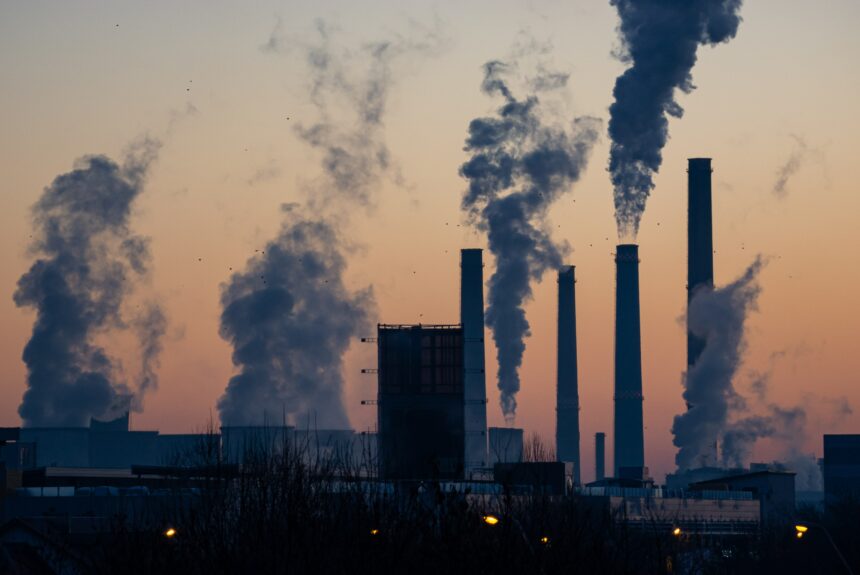The climate movement tends to fixate on the future and on the government. Long-term, government-involved steps like a clean energy transition are often emphasized most heavily in the hopes of mitigating further damage to the planet. While these moves to prevent future environmental harm are critical, the climate movement often overlooks the importance of retroactive and private climate action. Carbon capture, utilization, and storage (CCUS) technologies have the unique ability to address past emissions, as well as more heavily involve the private sector in lessening climate change’s harm. As such, they are crucial in the climate fight.
>>>READ: Verdox Is Changing The World of Carbon Capture As We Know It
In 2011, it was expected that the planet’s temperature would warm by another 0.6 degrees Celsius even if no more carbon was emitted into the atmosphere. Since then, about 390.5 billion metric tons of carbon have been released. The U.S. Energy Information Administration estimates that about 4.9 billion metric tons of energy-related carbon dioxide were emitted in 2021 alone. Those are not insignificant emissions, nor are they naturally disappearing. Essentially, there is far too much carbon already in the atmosphere–even before considering the emissions that are being added each day.
Reducing climate change’s impact relies on reducing future emissions while addressing billions of metric tons of carbon that have already been released into the atmosphere.
In addition to being of extraordinary practical importance, investment in CCUS technologies also signals essential rhetorical shifts taking place in the climate movement.
These rhetoric shifts extend to a growing recognition of the private sector’s value in curbing climate change. Captured and stored CO2 can be recycled for all the same uses as other forms of underground carbon (think: coal, oil) already are. As such, stored carbon can be turned into a commodity with trillion-dollar market potential. So while government support for CCUS development will help the industry grow, the ultimate success of carbon capture as a product – and, resultantly, as a climate response – will depend on the innovation and effort of the industry itself. After all, if the market potential is anywhere near a trillion dollars, the profit motive will incentivize companies to lead the way.
This innovation and effort are already being seen in Houston, where 14 companies are building a carbon capture hub. Their plan for the hub could lead to the safe storage of 50 million metric tons of carbon by 2030, and twice that amount by 2040. In the process of spearheading this industry, the companies expect to create thousands of jobs while protecting old ones. The rise of CCUS is proving that climate change can be addressed in an economically feasible manner.
Evidently, carbon capture presents exciting economic opportunities. However, the technology is energy intensive. Carbon sequestration takes place in large plants that require significant equipment and fueling to run effectively. As a result, carbon capture’s critics argue that CCUS technologies may not be worth the amount of energy they rely on to function.
>>>READ: Battelle, Equinor to Bring Carbon Capture to Appalachia
Already, CCUS is capable of contributing to 14 percent of the atmospheric carbon reductions that are needed to keep warming below two degrees Celsius of warming, and it’s only becoming more efficient. A number of CCUS projects are becoming capable of sequestering more than 95 percent of the carbon that they take in, whereas just years ago exceeding 90 percent efficiency seemed unrealistic. While CCUS technologies require a lot of energy to function, the benefits that the technology provides merits that it sees a significant role in emissions reduction strategies moving forward.
Carbon capture is an unparalleled opportunity to directly and substantially lower net emissions. The crucial role that carbon capture can play in reducing emissions cannot be overstated. By placing a renewed emphasis on retroactive climate solutions and market innovation, a carbon capture-forward climate movement is one that can deliver true solutions.
Nadia Suben is the leader of the American Conservation Coalition’s New York City branch, as well as the founder of the organization’s Conservatives for Clean Cities initiative.
The views and opinions expressed are those of the author’s and do not necessarily reflect the official policy or position of C3.
